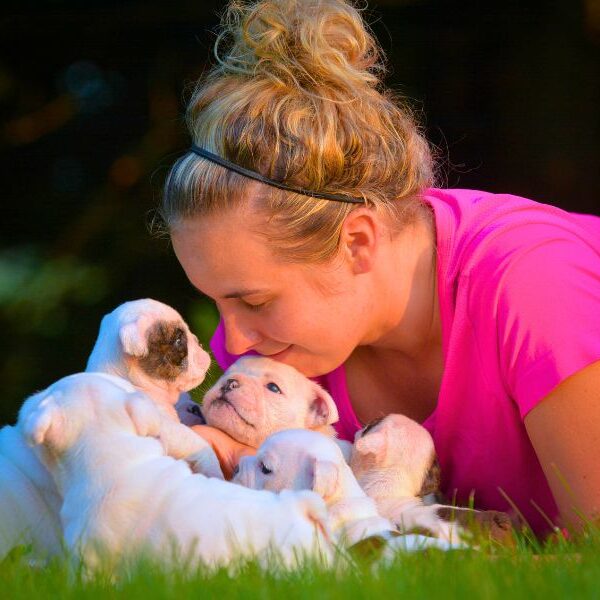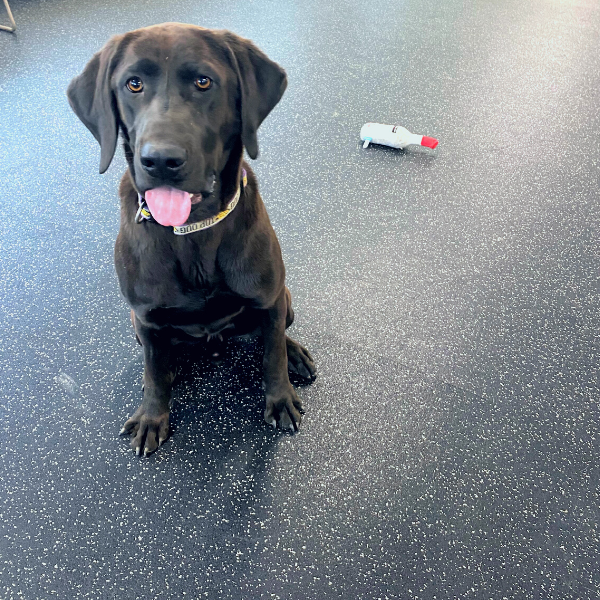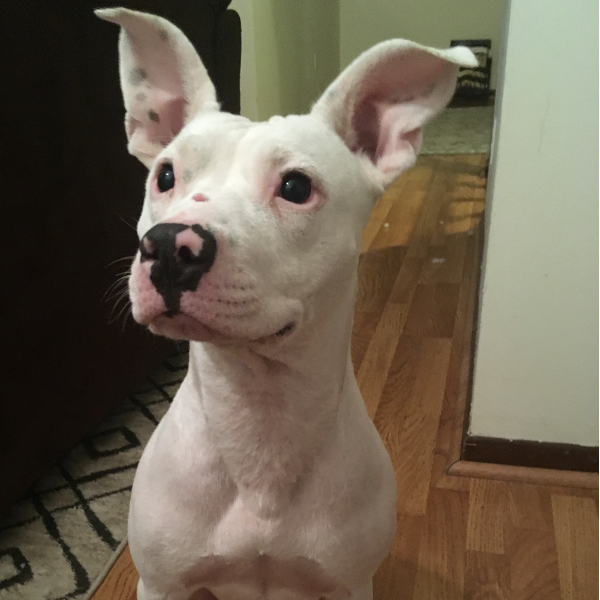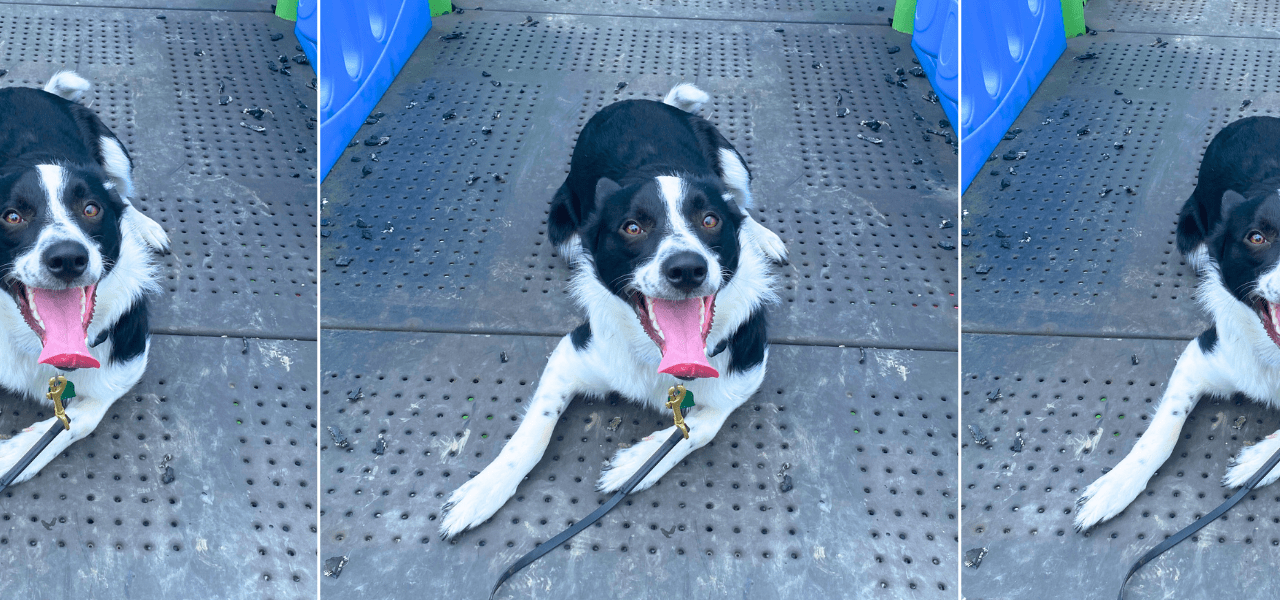
If your dog has anxiety, it can feel like you do everything for them, but they're still worried.
As a professional dog trainer, I've worked with hundreds of dogs who live with all sorts of types of anxiety. In this post, I'll share some of the basic steps I give my clients with anxious dogs to help them treat their dog's anxiety.
***While there are lots of tips that will help dogs of all types work through negative emotions, given the individual dog's personality, owner's ability, and other circumstances that are unique to each situation, working with a qualified dog trainer who has successfully worked with anxiety before is always recommended.

Dog Has Anxiety
One more disclaimer:
***If your dog is harming themselves (escaping crates, breaking teeth, breaking nails, jumping out of windows because of their anxiety), please call a dog behaviorist or trainer that has successfully worked with anxious dogs.****
Dog anxiety can be caused by all sorts of things including: genetics, previous history with humans and other dogs, health, environmental factors and even diet.
Symptoms of anxiety include:
- having an overly "hyper" dog
- panting
- drooling
- pulling on the leash in a way to run away
- escaping
- jumping up
- chewing (on themselves or items around the house)
- chewing on the crate
- licking
- pacing
- shaking
- barking
There are medications that can help with anxiety, including fluoxetine, trazodone and alprazolam. However, I'm a believer that it's always worth a shot to try to manage and treat a dog's anxiety through training and owner's improvement as a handler before utilizing medications.
Just like humans, there are dogs who benefit from pharmaceutical intervention. In the same sense working on improving mental health also helps to treat anxiety.
With dogs, that means engaging in behavior modification training, obedience and relaxation training. Doing so will help your dog have the ultimate quality of life.
After spending thousands of hours coaching dog owners on how to handle their dog's anxiety, sere are some of the best tips for treating dog anxiety.
Dog has anxiety when I leave
1. Emotionally regulate yourself
Ever hear the saying, "your dog is a mirror?"
9/10 your dog will mirror your emotional state.
Ever been at the vet and the owner is gripping the dogs collar tightly, warning others the dog is dangerous? They have a tense tone and grip. Their body language is alert. Most of the time, the dog is fine once the staff take the dog away from the owner to the treatment room.
Alternatively, have you seen an owner coddle and coo to their dog saying "it's okay" and "don't be scared". This energy only gives a dog more reason to be afraid. Not only that, the owner is then lying to them- things may not be okay. Your dog might get stuck with a needle by a stranger who smells like sick dogs, angry dogs and even death.
(On a side note- I never blame a dog for being anxious at the vet. But I will always lead them through being there with confidence.)
You are the one who brought your dog into your home, so it's also your job to lead your dog through what they should be doing in your home. Help your dog understand this by being clear in your speech and body language.
If you want your dog to calm down, take a deep breath, grab a leash and practice being calm. Your dog will follow suite.
When you first start practicing calmness yourself, your dog may be slow to follow your emotional state because they are not used to "reading the room". However, if you are consistent and persistent, your dog won't have any anxious energy left to feed off of
How to treat separation anxiety in dogs
2. Recognize a difference between the mental states of your dog having "energy", feeling "anxious", "overstimulated" and "happy"
Surprisingly, most dog owners do not recognize the differences between a dog that is "happy", a dog who feels "overstimulated" and a dog who's feeling "anxious". Furthermore, many dog owners will write their dog's anxious behaviors off as a high energy dog.
Related: How to Get Your Dog to Focus on You Outside
However, there are sometimes (not so subtle) differences that can help you determine your dog's mood.
Happy: High wagging tail, relaxed jaw, normal pant, ears forward.
Energy: Your dog may get zoomies. They'll chase their tail, ability to participate in activities. Can be controlled and collaborative with the dog- fetch, tug, dog sports. You are easily able to regain dog's focus and tell the dog that now is not the time to play. Lastly, your dog will show a more peaceful expression after they expel their energy and are able to calm down.
Overstimulated: Your dog is almost unable to see people, and seem to be in their own world. Plus, they are at a high likelihood to redirect their energy to you, other dogs or people. This state is usually accompanied by barking, panting, jumping, running. It is difficult to regain the dog's focus and usually requires removing the dog from the situation to calm them down.
How to tell if your dog has anxiety
Anxiety: Similar to overstimulated. Your dog may appear like they are concerned for themselves or their safety. They may pant, pace, and shake. A dog may act overstimulated if anxiety reaches a threshold. They may or may not be able to focus on you depending on the level of anxiety.
A dog who is overstimulated doesn't always have anxiety, but a dog who is anxious has a higher risk of becoming overstimulated.
A dog who has extra energy that is not addressed is more likely to become overstimulated which then increase the risk for the dog to feel anxious. Which leads us to our next tip.
How do I help my dog with anxiety?
3. Give your Dog a Job
Do you have a border collie with no access to cows or sheep?
Do you have a husky in an apartment with little to no access to long distance running?
What about a hound who pulls on the leash in order to sniff things?
Do you have a hunting dog who you discourage from chasing things?
Do you have a shepherd who you got for protection, but didn't get them any formal training on protection?
Dog's crave having a job. Think about the breed of dog you have, and consider what they were born to do.
Increase your dog's fulfillment and their problem solving skills by pursuing the thing they were born to do! Try taking them to an obedience class, scent work course, barn hunt, or protection work. Start taking them on runs, or incorporating purpose into your daily activities with them
Related: 17 Indoor Dog Activities Guaranteed to Tire Any Dog
If your dog's genetic purpose is not being fulfilled, they will be at a higher likelihood to develop some sort of anxiety.
The good news is, that if you give your dog purpose, their anxiety can lessen and in arguably most cases, completely resolve.
Anxious Dog Training
4. Teach Your dog to Relax
Make sure your dog is getting appropriate exercise at the appropriate time. When your dog is feeling anxious, it's usually not a great time to go exercise. Sometimes exercise can induce a feedback loop that increases anxious behaviors.
If a dog has anxiety, the anxiety is usually fueled by what the dog sees, feels and hears. The good news? A dog's nose can have the same effects as grounding, calming and mindfulness techniques that humans use.
So, teaching your dog how to use their nose can provide fulfillment, exercise and help to calm them down. This leads us to our next tip!
Dog has anxiety on walks
5. Use a long line
I will never stop singing the praises of the long line.
A long line is one of the most underrated tools for training success. A long line gives the dog more space to express themselves. Remember, dogs communicate using space and body language. A 6 foot leash cannot convey as many messages as a 15 or 30 foot leash.
Related: Best Dog Leashes for Training
When using a long line, your dog will get to explore and ground themselves (remember, dogs use their nose increases their connection to their body, environment, and people around them.)
Additionally, a long line will increase your dog's opportunity to exercise. Be careful with this one, because we don't want the long line exercises to turn into a positive feedback loop that overstimulates your dog. However, offering your dog some space to allow them to move their body more will help them burn off a little steam.
Lastly, when used correctly, a long line will teach a dog to be aware of you. Instead of fighting your dog on a short, 6 foot leash, a longer leash will offer your dog more of an off leash feel.
Seriously every dog owner should have this. If I had to be sent to an island to train 100 dogs and I could only take one tool, this would be it. Chihuahua to Great Danes, this leash is the GOAT. It's super light weight, durable, cleans up easy, and is somehow almost never gets itself tangled.
How to calm dog anxiety naturally
5. Try 24 hours without talking to your dog.
This is a HUGE tip. Most owners don't realize how much they are saying to their dog!
Talking to your dog can be a form of reward. And, this can increase risk for all types of anxiety, especially separation anxiety.
If you are constantly giving your dog a low level reward, they will be less likely to be able to self-soothe. Furthermore, they'll be even less likely to listen to you when you actually DO need to tell them something, like "come" or "stay".
Dogs are not verbal creatures. When they are in a group, they aren't using words, harnesses or leashes to control each other. They are using body language.
Humans are incredibly verbal creatures, and we don't primarily think of our body language to convey calmness and leadership to our dog.
We don't think about showing our dog what to do. We think about telling them what to do, and dogs don't have the ability to discern and interpret our words. (Think about telling a dog "come" versus "comeon" versus "comehere"
So, try a 24-hour challenge without talking to your dog (unless there's an emergency). Then, you can prioritize using your body language and space to communicate with your dog.
How to treat anxiety in dogs
6. Lead your dog through decision making
Some dogs can easily go with the flow and have a high tolerance for unpredictability. However, dog's with anxious tendencies are in need of a more structured and routine environment.
So, your anxious dog needs to know what they should be doing. When someone comes over, your dog craves guidance. Utilize your leash, your crate or a place command to decrease their opportunity for your dog to make the wrong decision.
Related: Prevent Jumping Up | My Dog Gets Overly Excited When Guests Come Over
How do I know if my dog has anxiety?
7. Practice obedience
Similarly, your anxious dog is very much like an A+ student. An A+ student wants to know exactly what the assignment is. They want to see the rubric.
This means, your dog wants to know exactly what they should be doing. They want to know that you are handling the big picture things, keeping them safe and all they have to do is "sit" or "lie down" or maybe "crate".
Obedience can be a powerful tool when a dog has anxiety. Obedience training helps increase trust and mutual respect within the relationship. So, if your dog has good obedience, you can override anxious behaviors- like pacing, jumping, barking or pulling on the leash by asking for obedience (sit, lay down or place).
Related: 11 Most Important Dog Commands
Related: Teaching a Dog to Sit (So They Actually Listen the First Time)
How to calm an anxious dog
8. Crate train your dog
Crate training is a super useful tool- especially if your dog suffers from separation anxiety.
Related: Crate Training a Rescue Dog | 5 Tips for Teaching Your Dog to Love the Crate
If your dog has previously broken out of the crate, you may want to consult a professional dog trainer to help recommend an appropriate protocol and crate for your lifestyle and your dog's needs.
The crate should offer your dog the same feeling you get after sitting down after a long day of work. The crate itself should be rewarding for the relaxation it provides.
If your dog has anxiety in the crate, you may need to step back and work on smaller steps, like feeding your dog in the crate!
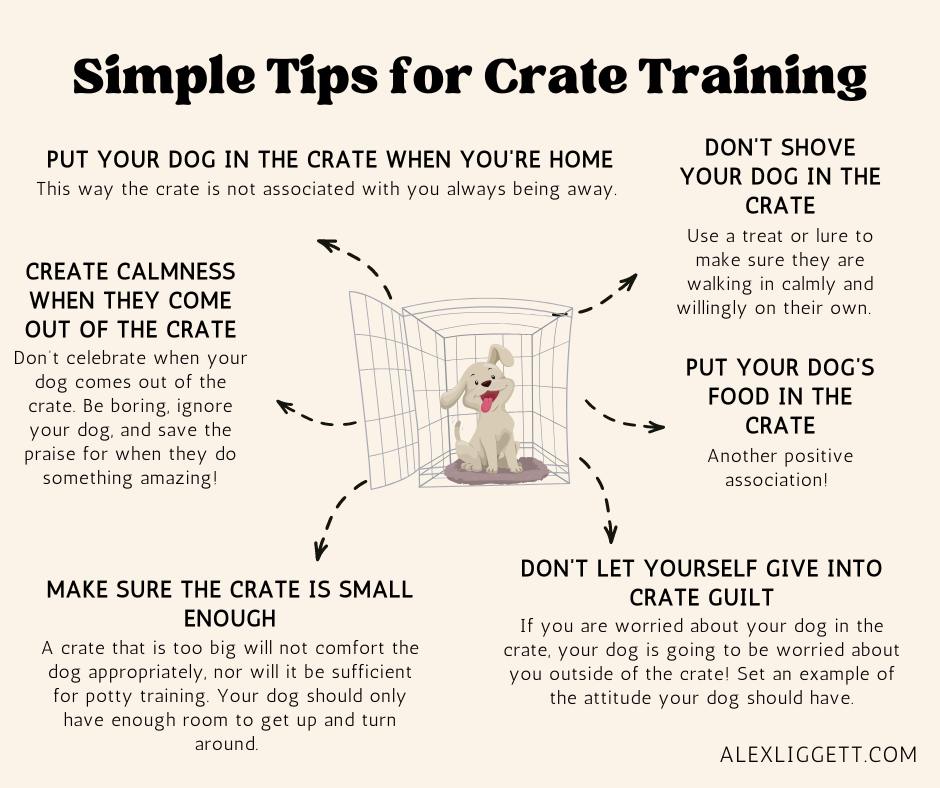
Dog has anxiety symptoms
9. Sit on the dog
Well, not actually. But, this exercise, Sit on the Dog, is such a helpful skill for any dog to have, especially when a dog has anxiety. Plus, every dog owner should be comfortable doing this!
Bonus tip: a LOT of training with your anxious dog will be boring because you'll be teaching your dog how to relax and do nothing. So, grab your collar and leash and start in your home or backyard, and go from there!
10. Work with a Dog Trainer
Finally, I'm a believer that when a dog has anxiety this is an issue that should be addressed directly by the owner. A dog who has anxiety often goes to a board and train and the anxiety goes away quickly because a trainer knows how to manage an anxious dog with the tips above.
Therefore, it is much more useful for the owner to learn how to manage their dog. So, hiring a trainer who can work with you in your home or in private training sessions is going to be the longest lasting solution.
Don't have a dog trainer? Schedule a consult now to discuss a custom plan for you and your dog!


